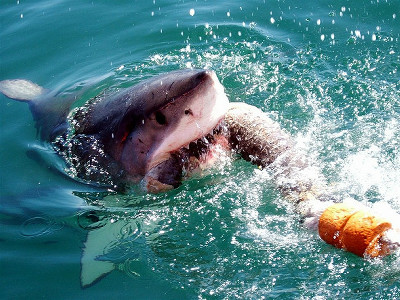Australian doctor explains 'first aid method when shark bite'

Sharks are associated with the image of attacking human beings, but in Australia the number of cases in which sharks actually attack humans is increasing, and sometimes even deaths occur. Nicholas Taylor, Deputy Dean of the Australian National University School of Medicine, who noticed that the main cause of death from sharks is bleeding from the lower extremities, researched the best first aid method when sharks bite the lower body. ,Announced.
Stopping Haemorrhage by Application of Rope tourniquet or inguinal Compression (SHARC study) - Taylor - 2021 - Emergency Medicine Australasia - Wiley Online Library
https://doi.org/10.1111/1742-6723.13736
Doctor's 'brilliant' new first aid technique can stem blood loss after shark attack | Medical research |
https://www.theguardian.com/science/2021/sep/24/doctors-brilliant-new-first-aid-technique-can-stem-blood-loss-after-shark-attack
From the groin at the base of the human thigh to the upper part of the knee, the second thickest artery on the body surface, the `` femoral artery '' runs. Mr. Taylor points out that the point is to press the femoral artery strongly with a fist from above as a way to respond when a shark bites.

by
Mr. Taylor's recommended first aid method is to ``find the center point of the subject's local area and the outside of the buttocks, grasp the fist and press firmly from above''. According to Taylor, the method effectively prevents blood loss and backflow of blood, with studies showing the method to be more than 50 percent more effective than the commonly practiced rope hemostasis method. It seems that you know.

``Because a shark bite is like a saw cut, restraining the wound itself is not effective, and not all surfers have a tourniquet,'' Taylor said. , explaining the advantages of this tool-free method.
Mr. Taylor has made this bleeding control method a signboard with an easy-to-understand design and hopes that it will be widely used, but for that purpose it is necessary to be approved by the Australian Resuscitation Council.

Related Posts:







